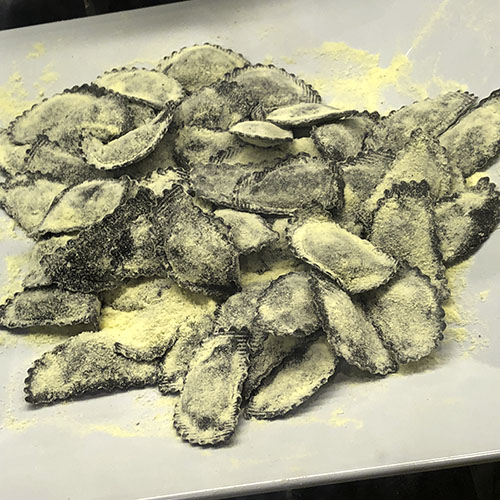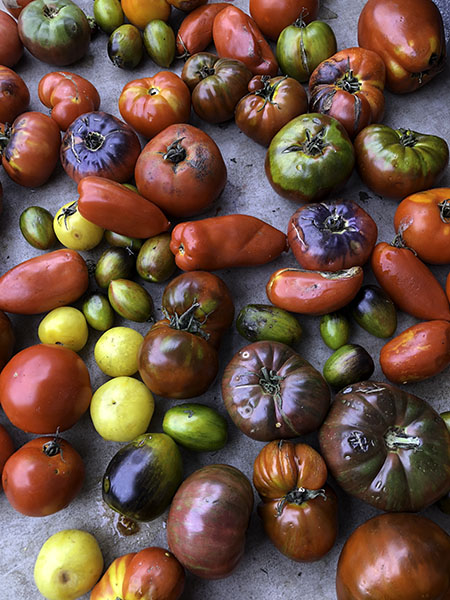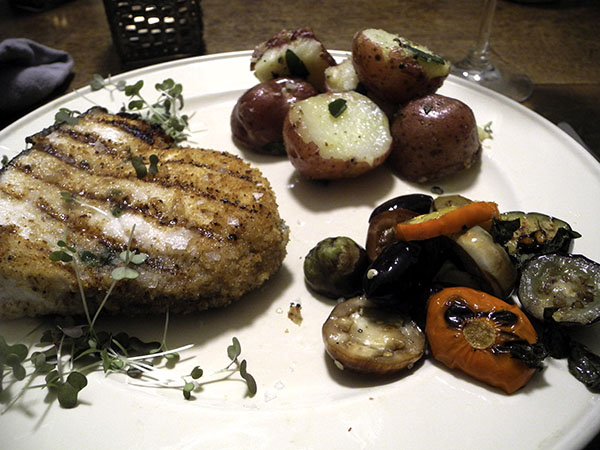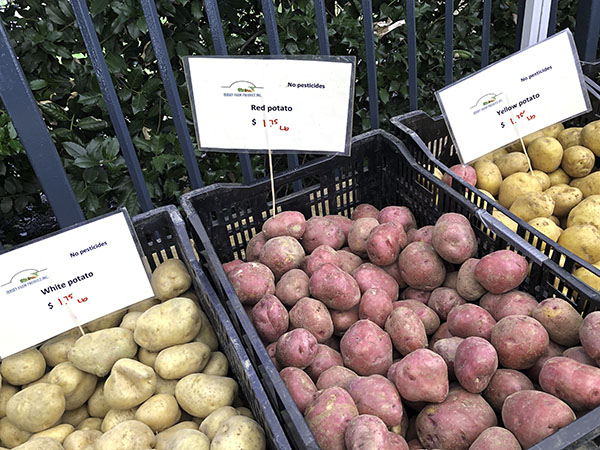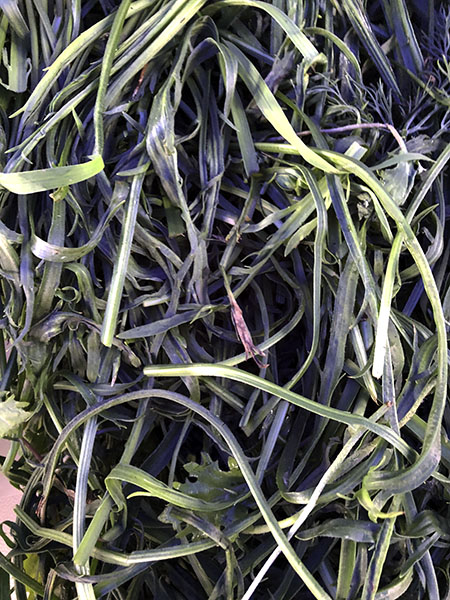
There’s butter everywhere. I think we’re in northern France.
We haven’t been there for a while, even in the kitchen, and in fact, the last time (and first) time I worked with this recipe it resulted in something quite different; maybe there was less butter. Also, the clams were bigger, way bigger.
I think I could work this recipe using olive oil next time. The green beans as well.

- four very fresh skate wings from Pura Vida Seafood, weighing just 13 ounces altogether, coated all over with 2 tablespoons of sea salt and freshly-ground black pepper-seasoned local Union Square Greenmarket-purchased whole wheat flour from the Blew family of Oak Grove Mills Mills, the fish sautéed in 2 tablespoons of butter inside a large enameled cast iron rectangular pan for 3 minutes or so on each side, then removed to 2 plates, kept warm in a very ‘slow oven’, and a little more than a tablespoon of additional butter added to the pan, allowed to melt, and 8 littleneck clams, also from Pura Vida, tossed in, the vessel covered loosely with tin foil, the littlenecks cooked until they had opened, at which time one fresh medium habanada pepper and one small shallot from Lucky Dog Organic Farm, both sliced thinly, were added and stirred around until softened a bit, the heat then turned off with the clams still there, and the pan allowed to cool just a bit before 3 more tablespoons of butter were introduced and again pushed around with a wooden spatula until melted, the zest from an organic Whole Foods Market lemon and all of its juices, plus half a dozen thin sprigs of thyme from Stokes Farm stirred around and the seasoning checked, the skate plates removed from the warming oven and the clams arranged on and around the fish, the plates garnished with red micro amaranth from Windfall Farms

- haricots verts from Berried treasures Farm, washed, trimmed but otherwise left whole, blanched only until softened in a large amount of salted water inside a heavy stainless steel pot that had once been a part of Peter Hoffman’s Prince and Crosby Street farm-to-table restaurant Savoy, dried in the same pan over low to medium heat, shaking, then set aside in a bowl until the fish was ready to be cooked, at which time they were reheated in a tablespoon of butter inside a heavy well-seasoned cast iron pan, finished with sea salt, freshly-ground black pepper, and mixed with chopped parsley from Alex’s Tomato Farm in the Saturday 23rd St market
-
the wine was a Portuguese (Vinho Verde/Lima) white, Vinho Verde Loureiro, Aphros 2016, from Astor Wines
- the music was an Opera Rara performance of Donizetti’s 1840 Paris opera, ‘Les Martyrs’, Mark Elder Conducting the Orchestra of the Age of the Enlightenment



